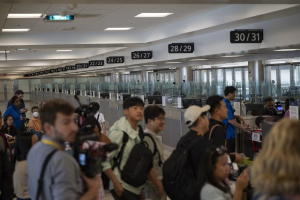President Trump recently announced his intent to impose a 200 percent tariff on pharmaceuticals to lure drug manufacturing back to the U.S. This action, if implemented, will come at great cost to millions of Americans already struggling to cover their medical bills and force them deeper into health care debt.

A vast number of Americans today rely on prescription medications. Over 60 percent of adults have at least one prescription filled every year.
These statistics rise dramatically as we grow older. The U.S. Centers for Disease Control and Prevention found an estimated nine out of 10 people over the age of 65 rely on these drugs to maintain their long-term health.
Many adults admit to not taking their medications due to fears over cost. Almost half of adults age 50 and older “have either skipped filling a prescription due to costs or know someone who has,” according to research by the American Association of Retired Persons.
U.S. prescription drug prices are almost three times higher than those of other countries. The U.S. “pays higher prices for prescription drugs than any other country in the world,” notes the U.S. Department of Health and Human Services.
In part, that’s because some of the most widely used drugs in America are imported from other countries.
Pharmaceutical imports have more than doubled in recent decades, rising from $65 billion in 2006 to $151 billion in 2019. They include many popular drugs that treat diseases such as rheumatoid arthritis, osteoporosis, cancer, blood clots, schizophrenia and obesity, among others.
The long-term goal of boosting U.S. drug manufacturing to make America less reliant on pharmaceutical production from other countries, lower drug costs and increase medication access is an important endeavor.
But the policies we enact to try and achieve this desired outcome must be weighed carefully to avoid creating short-term price spikes and drug shortages that could hurt millions of people.
Trump initially said his tariff proposal wouldn’t go into effect for another year. He has since changed this view by indicating the U.S. may “start off” with a lower tariff as early as Aug. 1, and raise it to a “very high tariff” in a “year or so.”
But experts have issued warnings about the possible impact these tariffs will have on public health, saying even a year isn’t enough time for the U.S. drug industry to build the required infrastructure necessary to meet U.S. supply demands.
“That would be potentially disastrous for every person because we need those pharmaceuticals, and it takes those companies a long time to produce them here in the U.S.,” said Afsaneh Beschloss of RockCreek Group in response to Trump’s proposed tariff plan.
UBS analysts noted Trump’s initial proposal to delay enforcement of a 200 percent tariff by 12 months still provides “insufficient time” for drug companies to relocate manufacturing operations to the U.S.. A four-to-five-year horizon is more realistic, they say.
What’s more, research commissioned by the pharmaceutical industry lobby group PhRMA found that a mere 25 percent tariff would increase U.S. drug prices by almost $51 billion.
Trump’s tariff proposals will hurt those dependent on generic medications especially hard. That’s because nearly 80 percent of generic capsules and tablets Americans consume come from outside the U.S.
Analysis by Brookings found that, given the low margins on generic prescriptions, tariff pressure could result in the discontinuation of certain drugs that, for many, are their only affordable option.
As of last year, Americans owed at least $220 billion in collective medical debt. Fourteen million owed over $1,000. Three million owed over $10,000.
Americans cannot absorb billions in added drug price hikes as a result of ill-designed and poorly timed tariff increases. It will place undue economic burden on those who can least afford it by creating drug shortages and impacting access to critical therapies people need to lead long, healthy lives.
Trump’s policies will be shouldered most by the elderly, the disabled and the marginalized — communities that require access to reasonably-priced prescription drugs.
It took decades for U.S. pharmaceutical production to move overseas; moving it back to America can’t happen overnight.
We need measured policy approaches, not knee-jerk ones, to prevent America’s most vulnerable from digging themselves further in debt to pay for medications many already can’t afford.
Reprinted from The Hill

